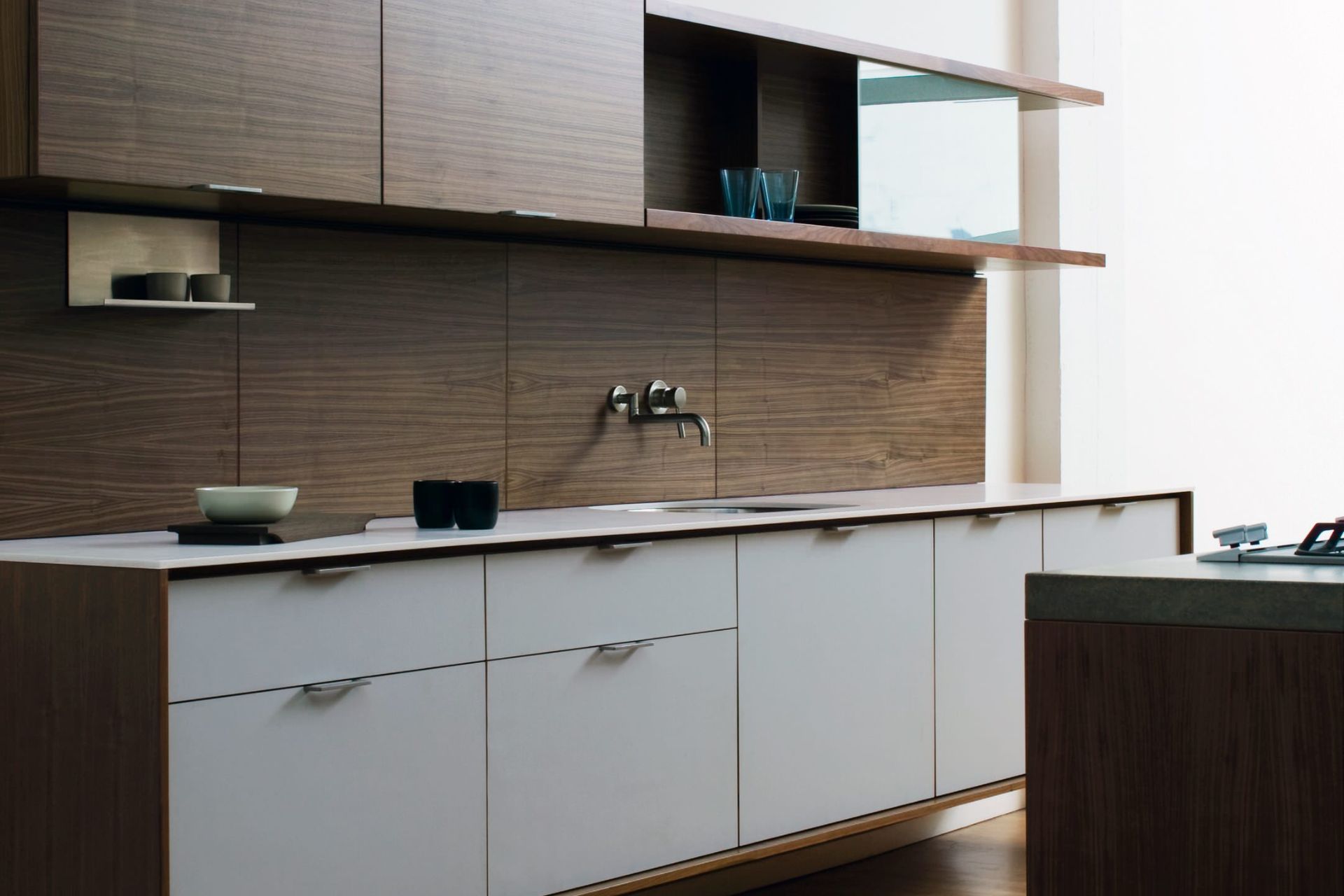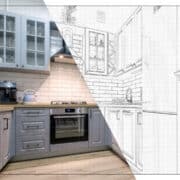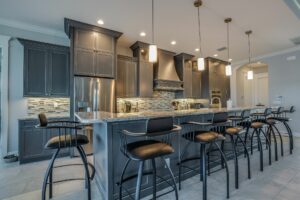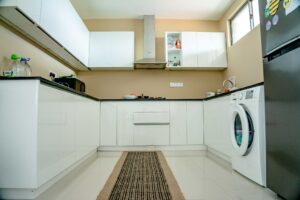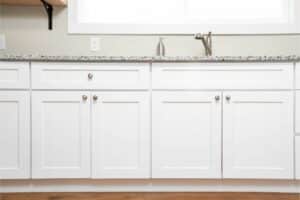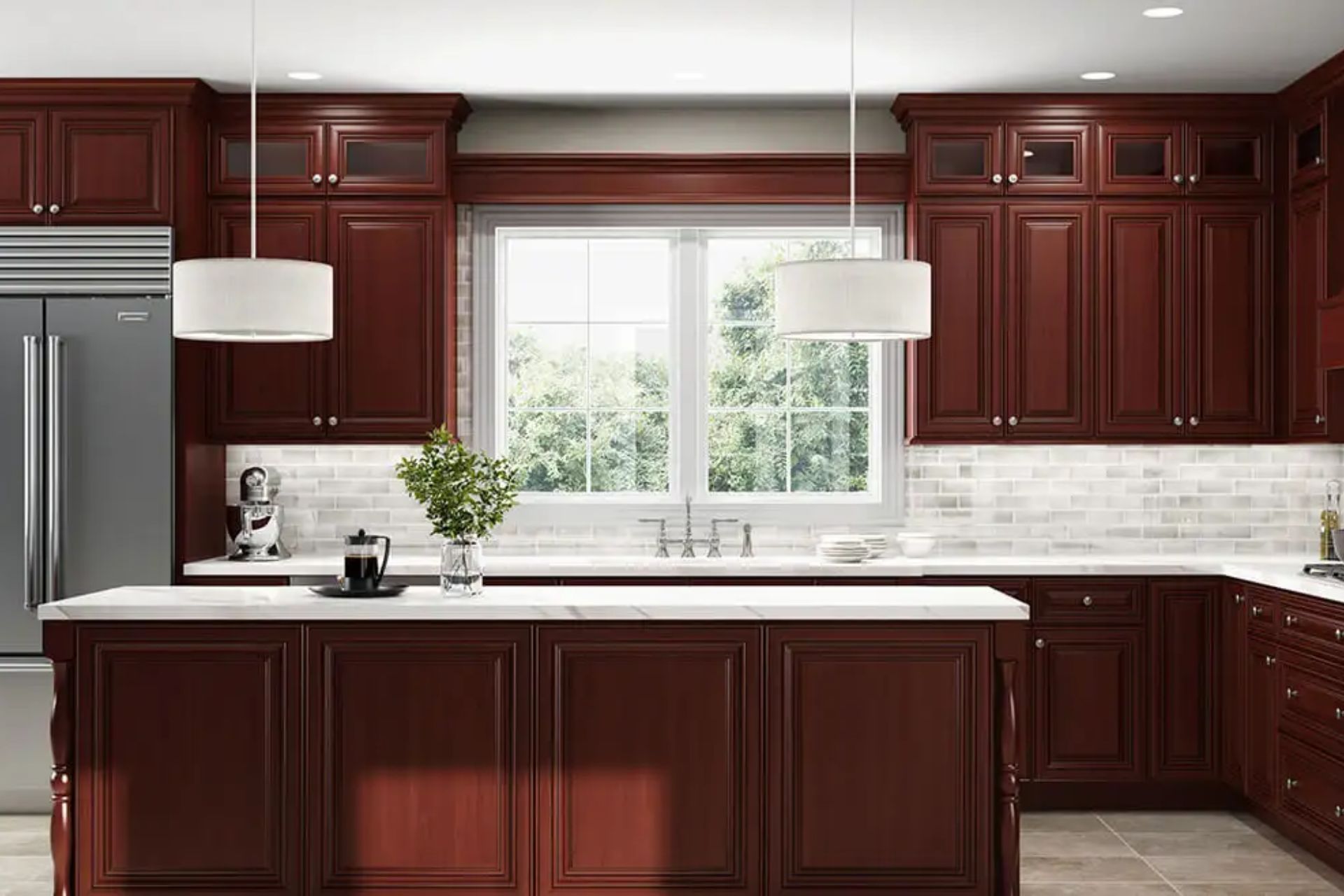Floating kitchen cabinets are a versatile and visually appealing addition to any kitchen.
Wall-mounted and suspended, these cabinets create an open, spacious atmosphere, offering a modern and functional solution to kitchen storage.
Floating kitchen cabinets can be an excellent addition to your home, offering a stylish and functional solution for storage and organization.
By considering the advantages, materials, styles, installation process, maintenance, and essential tips outlined in this comprehensive guide, you’ll be well-equipped to decide whether floating cabinets are the right choice for your kitchen renovation.
Be sure to consult with professionals as needed, ensuring a safe and successful project that elevates your kitchen design to new heights. Now, let’s dive in!
Advantages of Floating Kitchen Cabinets
Space-saving design
Floating cabinets are mounted directly onto the wall, which frees up floor space and creates an open, airy feel. This feature is especially beneficial in small kitchens or open-concept homes, as it helps maximize available space.
Easy cleaning and maintenance
With no base or legs touching the floor, cleaning under floating cabinets is a breeze. This design reduces the accumulation of dirt and dust, promoting a cleaner, more hygienic kitchen environment.
Customization and flexibility
Wall-mounted cabinets offer a wide range of design options, allowing you to create a unique, tailored look. You can adjust the heights, configurations, and finishes to meet your specific needs and preferences.
Improved accessibility and ergonomics
Floating cabinets can be installed at various heights, enabling you to choose a comfortable, ergonomic level that reduces strain on your back and shoulders while accessing items.
Modern aesthetics
Suspended cabinets provide a sleek, contemporary appearance that can instantly update any kitchen design. Their streamlined look is appealing to homeowners seeking a modern, cutting-edge aesthetic.
Materials for Floating Kitchen Cabinets
Plywood
Plywood is an engineered wood product known for its lightweight and durable properties. It is less prone to warping and sagging than solid wood and is available in a variety of veneers to suit your desired look.
Medium-density fiberboard (MDF)
MDF is an affordable, engineered wood option that offers excellent stability and resistance to moisture. It can be painted, laminated, or veneered to achieve your desired appearance.
Particleboard
Particleboard is an economical choice made from wood particles bonded together with resin. While not as strong as plywood or MDF, it is still a viable option for floating cabinets if budget constraints are a concern.
Stainless steel
Stainless steel floating cabinets are durable, easy to maintain, and offer a sleek, contemporary look. They are particularly popular in industrial-style kitchens.
Glass
Glass-fronted floating cabinets create an elegant, airy feel in your kitchen. They are perfect for showcasing your fine china, glassware, or decorative items while keeping them protected from dust.
Solid wood
Solid wood cabinets offer a classic, timeless appearance and are known for their durability and longevity. They are available in various wood species, such as oak, maple, and cherry.
Melamine
Melamine is a budget-friendly option made from resin-impregnated paper bonded to particleboard or MDF. It is available in a wide range of colors and patterns, offering a versatile choice for homeowners.
Acrylic
Acrylic is a high-gloss, durable material that provides a sleek, modern appearance. It is resistant to scratches and moisture, making it a low-maintenance option for floating cabinets.
Styles and Finishes for Floating Kitchen Cabinets
Minimalist
Minimalist floating cabinets feature clean lines and a simple design, often with handleless doors or discreet hardware. They create an uncluttered, contemporary look that complements a minimalist aesthetic.
Industrial
Industrial-style cabinets often incorporate materials like stainless steel, metal, or reclaimed wood. They may feature exposed hardware or open shelving for a raw, rugged appearance.
Scandinavian
Scandinavian-style cabinets emphasize simplicity, functionality, and natural materials. They typically feature light wood finishes, neutral colors, and minimalist hardware.
Mid-century modern
Mid-century modern cabinets showcase design elements from the 1950s and 1960s, such as tapered legs and geometric shapes. They often feature wood veneers, bold colors, or patterned laminate finishes.
Rustic
Rustic cabinets incorporate natural, distressed materials like reclaimed wood or aged metal. They often feature open shelving, exposed hardware, or other elements that evoke a warm, cozy, and inviting atmosphere.
Glossy finish
Glossy finishes create a sleek, reflective surface that adds a touch of glamour to your kitchen cabinets. They are available in a variety of colors and materials, including acrylic, laminate, and painted surfaces.
Matte finish
Matte finishes provide a soft, non-reflective appearance that is both understated and elegant. They can be found on various materials, such as wood, laminate, or painted surfaces.
Wood veneer
Wood veneer is a thin layer of real wood applied to a substrate like plywood or MDF. It offers the appearance of solid wood while being more affordable and environmentally friendly.
Laminate
Laminate finishes are made from layers of resin-impregnated paper bonded together under high pressure. They are durable, easy to clean, and available in a wide range of colors, patterns, and textures.
Painted
Painted finishes allow for unlimited color options, enabling you to create a truly personalized look for your floating kitchen cabinets. High-quality paint can create a smooth, durable finish that resists chipping and fading.
Installation Process and Considerations
- Measuring and planning: Accurate measurements of your kitchen space are essential for proper planning. Consider window placement, electrical outlets, and other architectural features when sketching out your desired cabinet configuration.
- Marking the wall: Use a level to mark the wall where the cabinets will be mounted, ensuring they are installed evenly.
- Installing ledger boards: Attach ledger boards to the wall at the appropriate heights. These boards provide temporary support for the cabinets during installation.
- Mounting the cabinets: Position each cabinet on the ledger boards, ensuring they are level and aligned. Secure the cabinets to the wall with screws according to the manufacturer’s instructions.
- Final touches: Once all the cabinets are securely installed, remove the ledger boards and add any necessary trim or molding.
- Wall reinforcement: Consult with a professional to determine if your walls can support the weight of the floating cabinets. Reinforcements may be necessary for non-load-bearing walls or when using heavy materials for your cabinets.
- Professional assistance: While DIY installation is possible, hiring a professional is recommended to ensure correct installation and safety.
Maintenance and Care for Floating Kitchen Cabinets
- Cleaning: Regularly clean your cabinets with a soft, damp cloth and mild detergent. Avoid abrasive cleaners or scouring pads that could damage the finish.
- Moisture and humidity control: Ensure proper ventilation in your kitchen to reduce moisture buildup, which can damage your cabinets over time.
- Inspecting hardware and fasteners: Periodically check your cabinet hardware and fasteners to ensure they are secure and functioning properly.
- Protecting surfaces from scratches and dents: Use caution when moving items in and out of your cabinets to prevent scratches and dents. Consider adding shelf liners or protective pads to minimize potential damage.
- Preventing and repairing damage: Address any damage, such as chipping, peeling, or warping, as soon as it occurs. Consult with a professional for repair options if needed.
Essential Tips for Homeowners
- Assessing wall support: Ensure your walls can support the weight of the floating cabinets. Consult with a professional to determine if reinforcements are necessary.
- Incorporating built-in lighting: Consider adding under-cabinet LED lighting to illuminate your countertops and enhance the overall functionality of your kitchen.
- Selecting high-quality hardware: Invest in durable, stylish hardware for your floating cabinets, as it will be more exposed than traditional cabinets. Quality hardware will enhance the overall look and longevity of your cabinets.
- Planning for adequate storage: Assess your storage needs and preferences before selecting your floating cabinets. They are available in various sizes and configurations, so take the time to determine which options best suit your kitchen.
- Consulting with a professional kitchen designer or contractor: Floating cabinets may not be suitable for every kitchen layout or design. Consult with a professional to ensure that your choice complements your existing architecture and space, and to receive guidance on proper installation.
Floating kitchen cabinets offer homeowners a sleek and functional solution for kitchen storage and organization. By understanding the various aspects of floating cabinets, including their advantages, materials, styles, installation, maintenance, and essential tips, you’ll be better equipped to make an informed decision about whether they are the right choice for your home. Keep in mind that consulting with professionals is key to ensuring a successful project that adds style, functionality, and value to your kitchen space.
